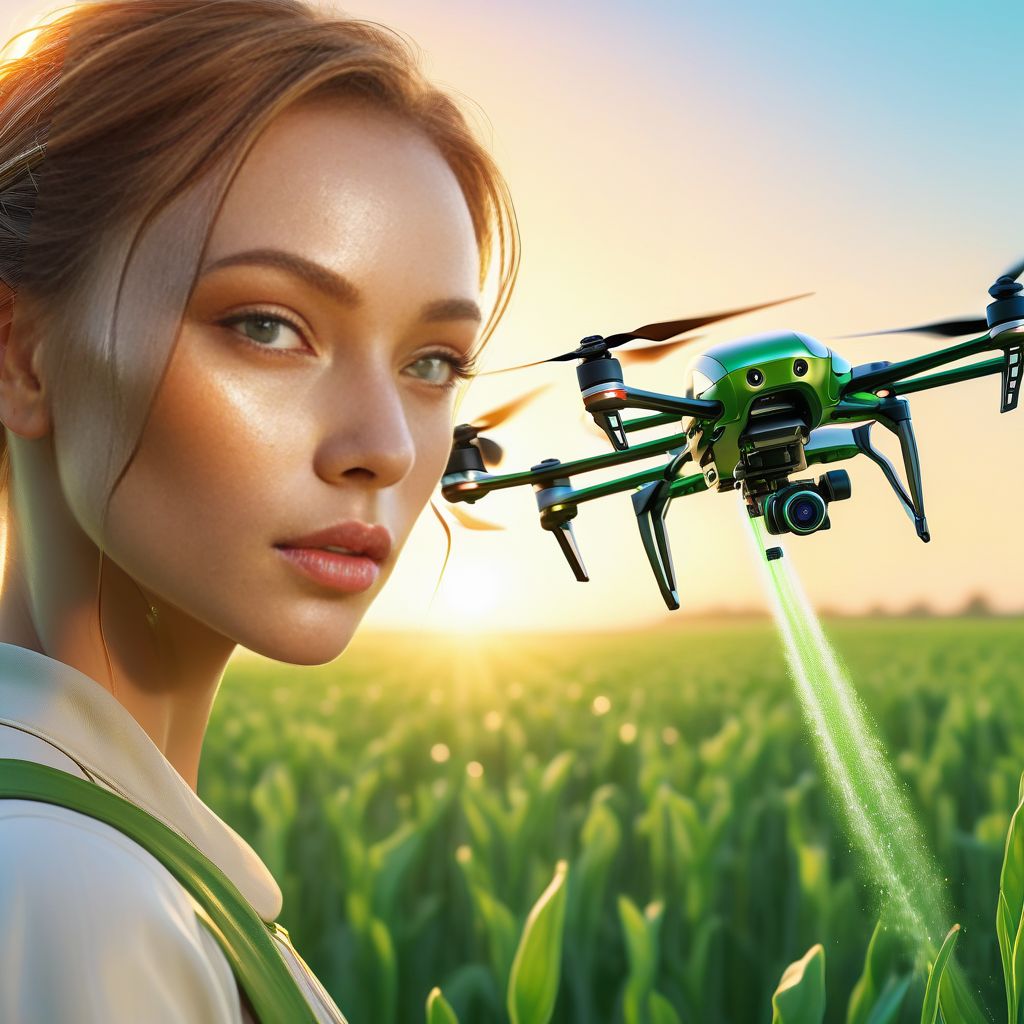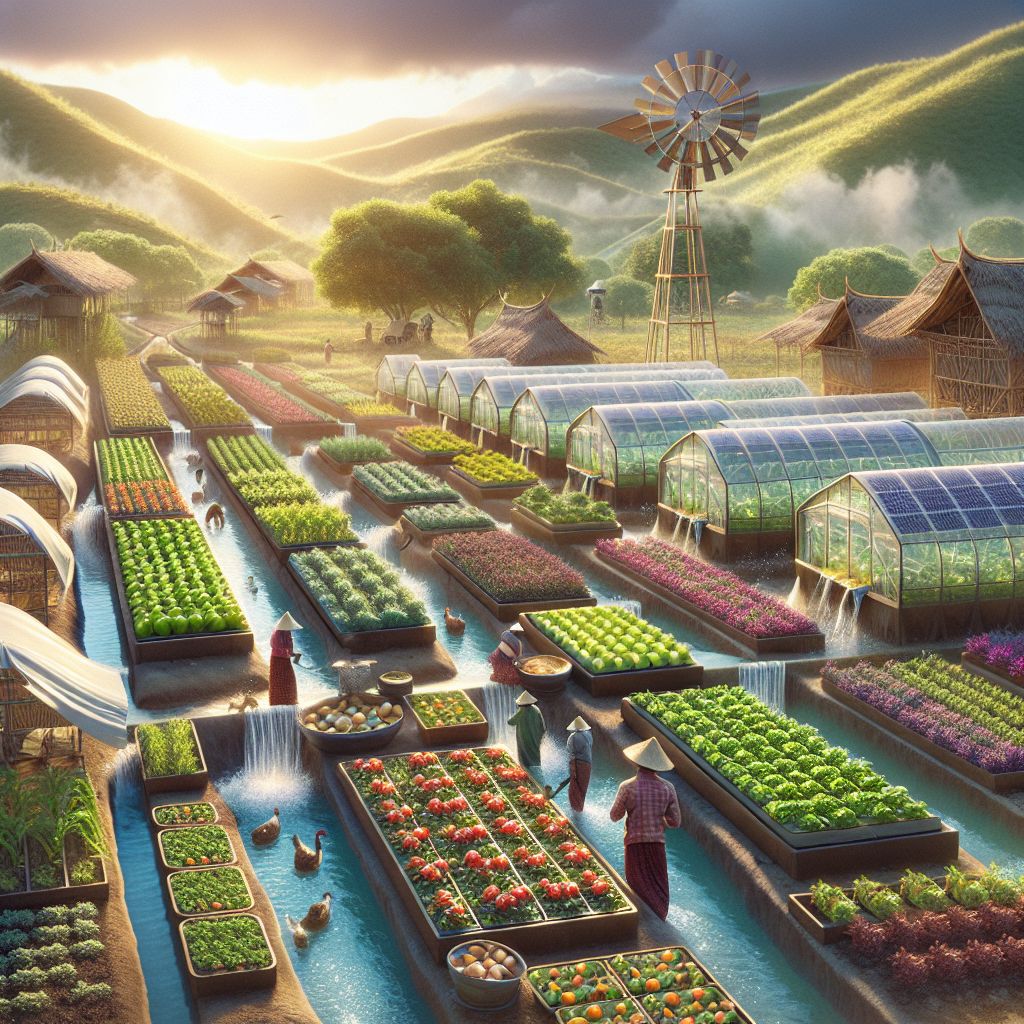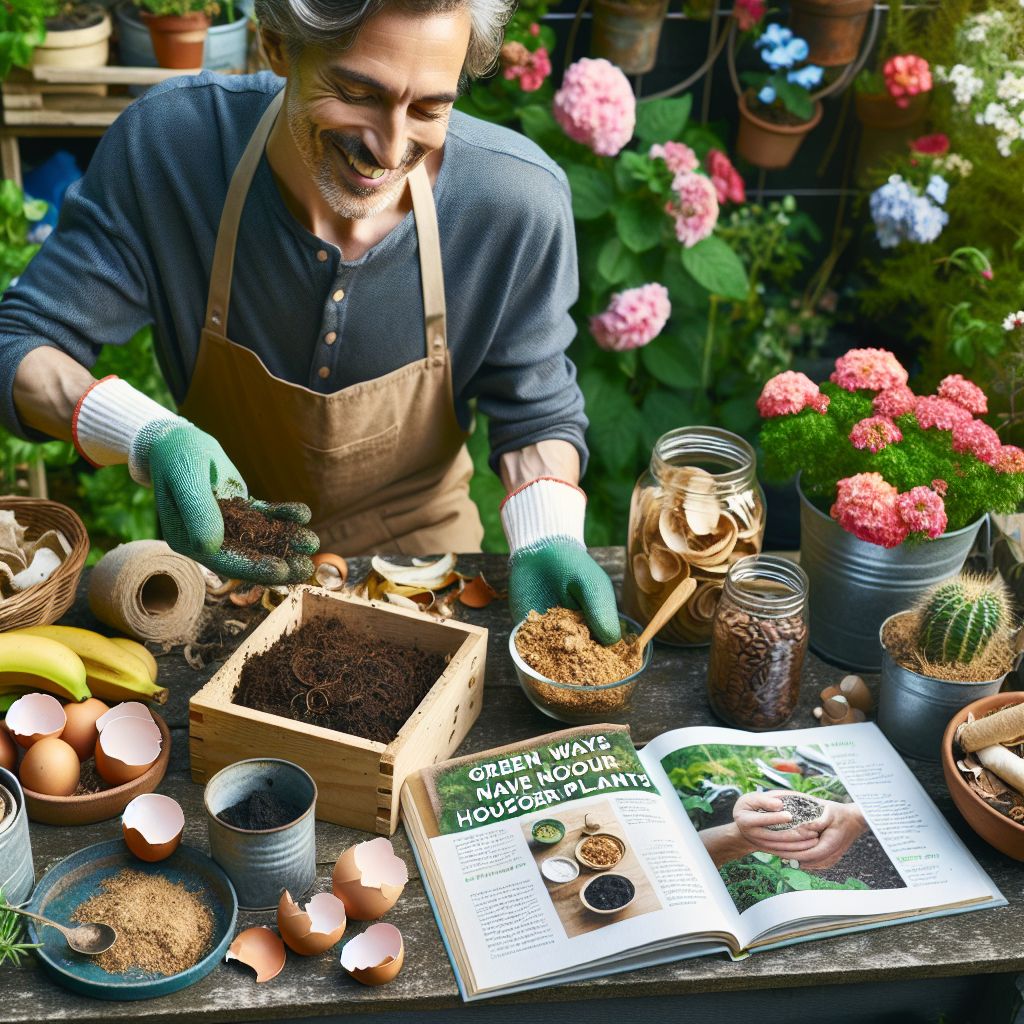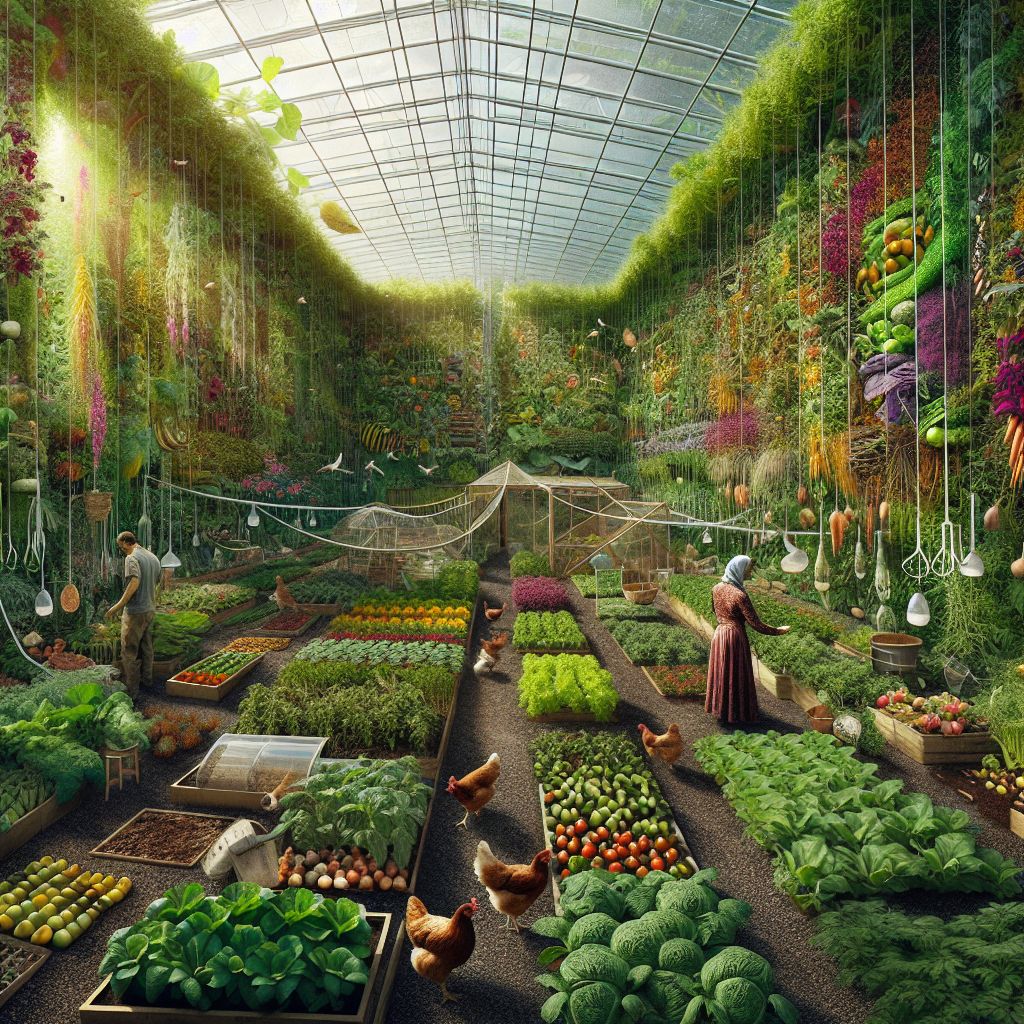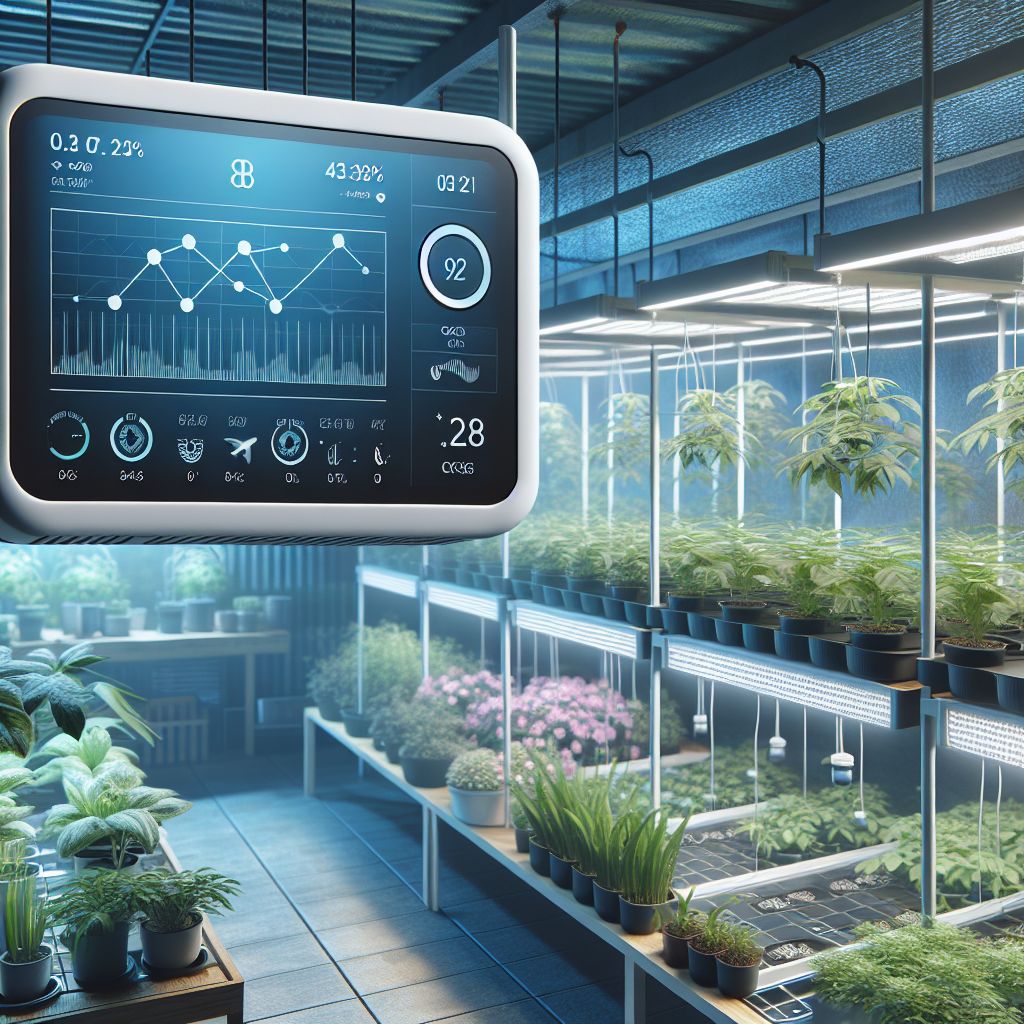Key Takeaways
- Smart greenhouse apps enable growers to monitor and control greenhouse conditions from their mobile devices.
- Automation in greenhouses can lead to significant improvements in crop yield and resource efficiency.
- Choosing the right app involves considering the types of sensors required, compatibility with existing systems, and ease of use.
- Key features of an effective monitoring app include data analysis, remote access, and customizable alerts.
- By integrating smart technology, growers can save time, reduce manual labor, and make data-driven decisions for better crop management.
Smart Greenhouse Monitoring Apps Systems
Imagine having the power to control the climate of your greenhouse from the palm of your hand. With smart greenhouse remote monitoring systems, that’s exactly what you can do. These systems are revolutionizing the way we grow food, making it easier and more efficient than ever before.
Getting The Best Greenhouse Automation Benefits
When it comes to greenhouse automation, the benefits are clear. With the right technology, you can ensure optimal growing conditions 24/7, reduce the risk of plant diseases, and even cut down on water and energy consumption. But how do you harness these benefits? It starts with understanding what’s available to you and aligning it with your specific needs.
Most importantly, you need to consider the types of crops you’re growing, the size of your greenhouse, and your budget. From there, you can start to look at different systems and apps that can help you monitor and maintain the perfect environment for your plants.
Types of sensors for greenhouse remote monitoring systems
To get the most out of your smart greenhouse system, you’ll need to understand the different types of sensors available. These are the eyes and ears of your operation, providing valuable data on everything from temperature and humidity to soil moisture and light intensity.
Here’s a quick rundown of some common sensors you might find in a smart greenhouse setup:
- Temperature sensors to keep the climate just right.
- Humidity sensors to prevent mold and ensure plant health.
- Soil moisture sensors to optimize watering schedules.
- Light sensors to adjust artificial lighting as needed.
- CO2 sensors to monitor and adjust levels for photosynthesis.
Hardware And Software Tools Used to Implement Greenhouse Systems
Getting your greenhouse connected isn’t just about software, it’s also about the hardware. You’ll need a reliable network of sensors and actuators connected to an intelligent IoT gateway. This gateway serves as the central hub for all your devices, collecting and processing data before sending it off to your chosen app.
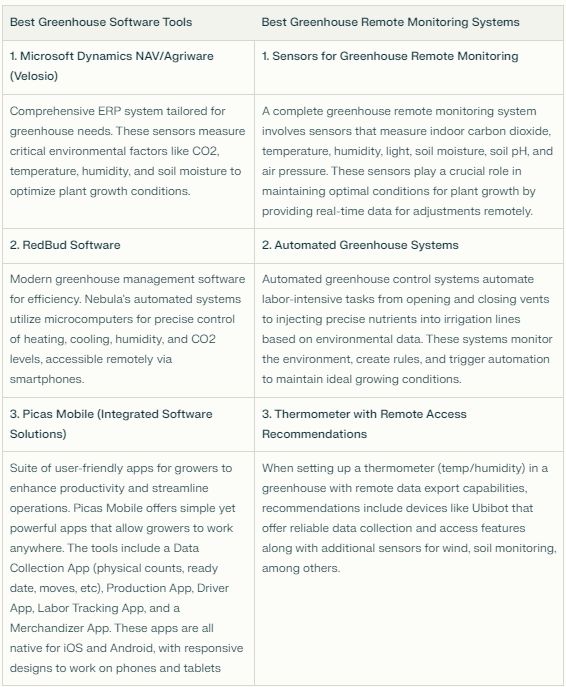
Therefore, when selecting tools for your greenhouse, look for compatibility. The best systems can easily integrate with various sensors and equipment. This way, your system can adapt as your needs grow and change without needing a complete overhaul.
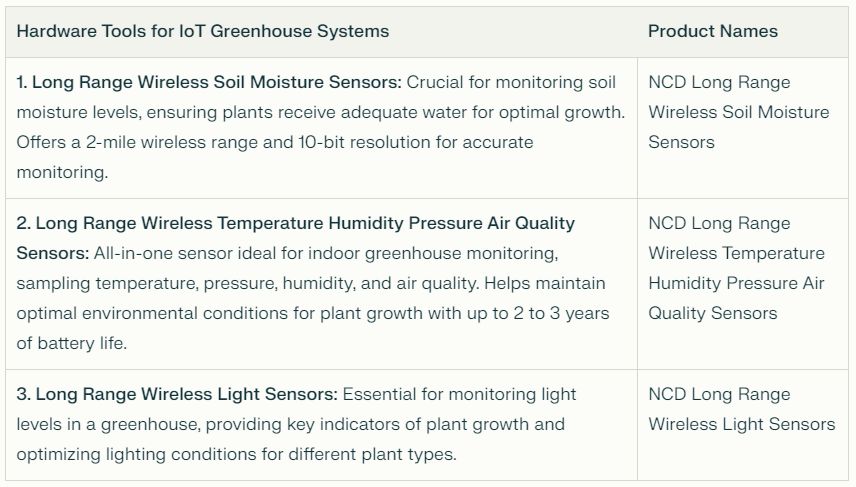
Getting Started with Smart Greenhouse Monitoring Apps
So, you’re ready to take the plunge into smart greenhouse technology? The first step is to choose the right app. This app will be your control center, where you can monitor all the data from your sensors and make adjustments as needed.
Keep in mind, the best app for you is one that’s intuitive to use and offers a comprehensive overview of your greenhouse at a glance. It should provide real-time data and alerts to keep you informed of any issues as they arise.
Choosing the Right App for Your Greenhouse
With so many apps on the market, making a choice can feel overwhelming. Here’s what you should consider:
- Compatibility with your existing systems and sensors.
- User interface and ease of navigation.
- Customization options for alerts and data reports.
- Cost and subscription model to fit your budget.
For instance, if you’re already using Monnit sensors, you’ll want an app that’s compatible with their technology. Similarly, if you’re just starting out, you might look for an app that offers a simple, straightforward dashboard that doesn’t require a tech degree to understand.
Setting Up Your Smart Monitoring System
Once you’ve chosen your app, setting up your system is the next step. This involves installing your sensors throughout the greenhouse and connecting them to your IoT gateway. Then, you’ll pair the gateway with your app, and voila – you’re ready to monitor and control your greenhouse from anywhere.
Remember, the goal is to make your life easier, not more complicated. So take the time to get familiar with your app’s features and settings. A little bit of learning up front can save you a lot of time and headaches down the road.
8 Types Of Sensors For Best Greenhouse Remote Monitoring Systems
| Type of Sensor | What It Monitors | Why It’s Important |
|---|---|---|
| Temperature | Air temperature | Essential for maintaining the optimal climate |
| Humidity | Air moisture levels | Prevents mold and ensures plant health |
| Soil Moisture | Water content in the soil | Optimizes watering and prevents over/under-watering |
| Light | Intensity of light | Adjusts lighting for plant growth cycles |
| CO2 | Carbon dioxide levels | Regulates photosynthesis for healthy plant growth |
| pH | Soil acidity | Ensures soil conditions are ideal for nutrient uptake |
| EC (Electrical Conductivity) | Salt concentration in the soil | Monitors nutrient levels and soil health |
| PAR (Photosynthetically Active Radiation) | Quality of light for photosynthesis | Ensures plants receive the right light spectrum for growth |
Each type of sensor plays a crucial role in the overall health and productivity of your greenhouse. By understanding and utilizing these tools, you can ensure your plants are always in the best possible environment.
And with that, we’ve laid the groundwork for empowering growers with smart greenhouse technology.
Remote Access and Controls
One of the most significant advantages of smart greenhouse apps is the ability to access and control your greenhouse environment remotely. This means you can adjust temperature, humidity, lighting, and water systems from your smartphone or tablet, whether you’re at home, in the office, or halfway around the world. This remote capability not only saves time but also ensures that your plants receive immediate attention when needed.
Custom Alerts and Notifications
Another key feature of a robust greenhouse monitoring app is the ability to set up custom alerts and notifications. These alerts keep you informed about critical changes in greenhouse conditions, such as sudden temperature drops or spikes in humidity. For example, if the temperature falls below a certain threshold, you will receive an instant alert to take immediate action to protect your crops.
Imagine getting a notification on your phone that your greenhouse temperature has dropped unexpectedly overnight. Thanks to the alert from your smart app, you can quickly adjust the heating system remotely to save your sensitive plants from the cold.
These alerts are not just for emergencies. They can also inform you about routine tasks, like when it’s time to water your plants or apply fertilizers, ensuring nothing gets overlooked in the daily hustle and bustle.
Maximizing Crop Yield with Precision Control
Maximizing crop yield isn’t just about reacting to problems, it’s about preventing them. With smart greenhouse apps, you can fine-tune the growing conditions to suit each plant’s specific needs. This precision control means you can increase the quality and quantity of your yield without wasting resources.
Irrigation and Water Conservation Tips
Water is a precious resource, and its conservation is crucial in sustainable farming practices. Smart greenhouse apps can help you schedule irrigation with precision, ensuring that plants get the right amount of water at the right time. This not only conserves water but also prevents the problems associated with over or under-watering.
For example, soil moisture sensors can provide real-time data on the water content in the soil, allowing you to adjust your irrigation schedule based on actual needs rather than guesswork.
Additionally, integrating weather forecasts can help you plan irrigation more effectively, taking into account expected rainfall and reducing unnecessary water usage.
Temperature and Humidity Adjustments
Temperature and humidity are two of the most critical factors in plant growth. Smart greenhouse apps enable you to monitor these conditions in real-time and make adjustments on the fly. By maintaining the ideal temperature and humidity levels, you can create the perfect microclimate for your plants to thrive.
Optimizing Light for Plant Growth
Light is another crucial factor for plant health and productivity. With smart apps, you can control artificial lighting systems to provide your plants with the optimal light intensity and spectrum they need for photosynthesis. This is especially useful during the shorter days of winter or when growing plants that require specific light conditions.
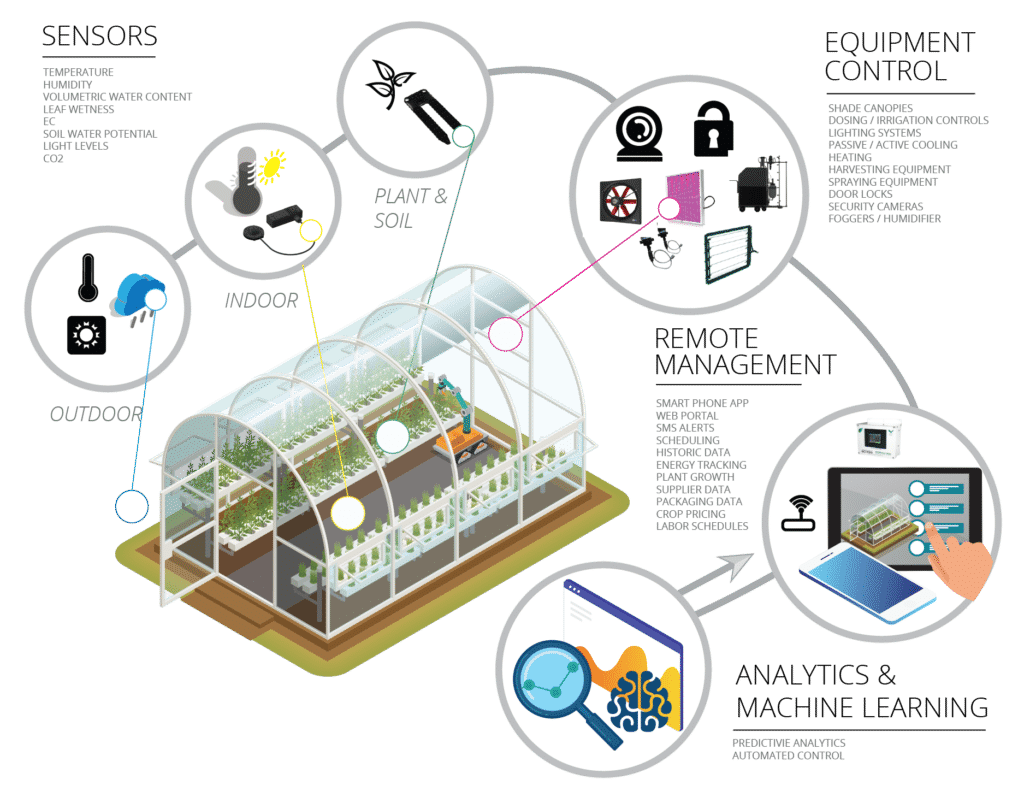
“Smart Greenhouse Remote Monitoring Systems” Image By PostScapes
Integrating AI & Machine Learning for Smarter Decisions
Artificial Intelligence (AI) and Machine Learning (ML) are taking smart greenhouse monitoring to the next level. By integrating these technologies, your app can analyze large amounts of data to make predictive decisions about plant health and resource management.
Predictive Analytics for Crop Health
Predictive analytics can help you anticipate problems before they occur. By analyzing data trends, smart greenhouse apps can predict issues like disease outbreaks or nutrient deficiencies, allowing you to take preventative measures and maintain the health of your crops.
For instance, by analyzing historical data on pest infestations, the app can alert you to the increased risk of a new infestation, prompting you to inspect your plants or apply preventive treatments.
Adaptive Algorithms for Resource Management
Adaptive algorithms in smart apps can learn from your greenhouse conditions and make adjustments to improve efficiency. They can manage resources like water and energy more effectively, reducing waste and saving you money.
For example, if the app notices that certain plants use less water than expected, it can adjust the irrigation schedule accordingly, ensuring that each plant gets just what it needs without excess.
Saving Time and Resources with Automation
Automation is a game-changer for greenhouse management. By automating routine tasks, you can free up your time to focus on more strategic aspects of your business, like expanding your operations or exploring new market opportunities.
Automated Control Systems Explained
Automated control systems in smart greenhouses take the data from your sensors and make the necessary adjustments automatically. For example, if the humidity levels rise above a set point, the system can automatically activate dehumidifiers without you having to lift a finger.
Automation is a game-changer for greenhouse management. By automating routine tasks, you can free up your time to focus on more strategic aspects of your business, like expanding your operations or exploring new market opportunities.
Why Smart Greenhouse Monitoring Apps are Revolutionizing Farming
This level of automation ensures that your greenhouse is operating efficiently at all times, even when you’re not there to oversee it. It’s like having a virtual assistant that’s always on duty, making sure your plants are healthy and happy.
Streamlining Greenhouse Management
Smart greenhouse apps are not just about reacting to the current conditions, they’re about planning for the future. With advanced analytics and predictive models, these apps can help you understand long-term trends and make informed decisions about your growing operations. This strategic approach to greenhouse management is helping growers around the world to increase their productivity and sustainability.
FAQ on Smart Greenhouse Monitoring Apps
As we wrap up our discussion on smart greenhouse monitoring apps, let’s address some common questions that might arise.
What Makes a Greenhouse “Smart”?
A “smart” greenhouse is one that uses technology to monitor and control the environment automatically. This typically involves a combination of sensors, actuators, and a central control system that can be managed through an app. The goal is to create the most efficient growing conditions possible.
- Automated temperature control for optimal plant growth.
- Moisture sensors that trigger irrigation systems when needed.
- Lighting systems that adjust based on the time of day or the level of natural sunlight.
These features and more make a greenhouse “smart” by allowing for more precise and responsive management of the growing environment.
How Does a Monitoring App Improve Efficiency?
A monitoring app improves efficiency by providing real-time data and controls at your fingertips. This enables you to make quick decisions and adjustments without being physically present in the greenhouse. The app can also analyze data over time to help you identify patterns and optimize your operations.
Can the App Integrate with Existing Greenhouse Equipment?
Many smart greenhouse apps are designed to be compatible with a wide range of equipment. However, it’s important to check with the app provider to ensure compatibility with your specific systems. In some cases, you may need to update or replace equipment to fully utilize the app’s capabilities.
Does a Smart Greenhouse App Require Technical Knowledge to Operate?
While some technical knowledge can be helpful, many smart greenhouse apps are designed with user-friendliness in mind. They often feature intuitive interfaces that make it easy for anyone to understand and use, regardless of their technical background.
Are There Any Privacy Concerns with Data Collected by these Apps?
As with any technology that collects data, there are potential privacy concerns. It’s important to choose an app from a reputable provider that follows best practices for data security and privacy. Be sure to review the app’s privacy policy to understand how your data will be used and protected.
By embracing smart greenhouse monitoring apps, you’re taking a significant step towards a more efficient, productive, and sustainable future in agriculture. With the right tools and knowledge, you can transform your greenhouse operations and grow better crops than ever before.

